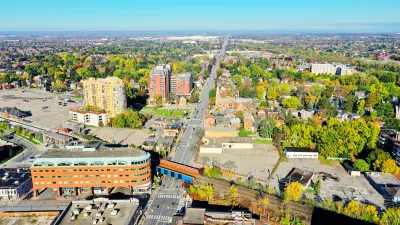Despite many studies confirming the effect of induced traffic, the effect is often ignored in the transport models used for project appraisal, says a team of Scandanavian researchers creating an extreme bias in the assessment of new projects.
Induced traffic, for those not in the know, is, according to StreetsWiki, is "the phenomenon whereby decreasing the cost of vehicle trips in a particular corridor -- usually by decreasing congestion through a roadway improvement -– induces new vehicle trips in that corridor."
A new research paper from professors at Aalborg University in Denmark and the Institute of Transport Economics in Norway says that the cost-benefit analyses for new roads in Europe still suffer from a lack of recognition for the induced traffic phenomenon:
"By exaggerating the economic benefits of road capacity increase and underestimating its negative effects, omission of induced traffic can result in over-allocation of public money on road construction and correspondingly less focus on other ways of dealing with congestion and environmental problems in urban areas," according to the report summary.
The effect is illustrated through a case study of a new road project in Copenhagen, where a more sophisticated representation of travel behaviour resulted in 40% less benefits compared to traditional approaches. The researchers argue for transport models to focus more on pedagogy than precision, to reduce the risk of policy makers misleading both themselves and the public.
The full report is available as a free PDF download.
Thanks to Morten Skou Nicolaisen
FULL STORY: Traffic Forecasts Ignoring Induced Demand: a Shaky Fundament for Cost-Benefit Analyses

Planetizen Federal Action Tracker
A weekly monitor of how Trump’s orders and actions are impacting planners and planning in America.

Maui's Vacation Rental Debate Turns Ugly
Verbal attacks, misinformation campaigns and fistfights plague a high-stakes debate to convert thousands of vacation rentals into long-term housing.

Restaurant Patios Were a Pandemic Win — Why Were They so Hard to Keep?
Social distancing requirements and changes in travel patterns prompted cities to pilot new uses for street and sidewalk space. Then it got complicated.

In California Battle of Housing vs. Environment, Housing Just Won
A new state law significantly limits the power of CEQA, an environmental review law that served as a powerful tool for blocking new development.

Boulder Eliminates Parking Minimums Citywide
Officials estimate the cost of building a single underground parking space at up to $100,000.

Orange County, Florida Adopts Largest US “Sprawl Repair” Code
The ‘Orange Code’ seeks to rectify decades of sprawl-inducing, car-oriented development.
Urban Design for Planners 1: Software Tools
This six-course series explores essential urban design concepts using open source software and equips planners with the tools they need to participate fully in the urban design process.
Planning for Universal Design
Learn the tools for implementing Universal Design in planning regulations.
Heyer Gruel & Associates PA
JM Goldson LLC
Custer County Colorado
City of Camden Redevelopment Agency
City of Astoria
Transportation Research & Education Center (TREC) at Portland State University
Jefferson Parish Government
Camden Redevelopment Agency
City of Claremont





























